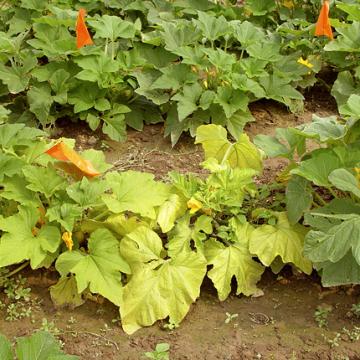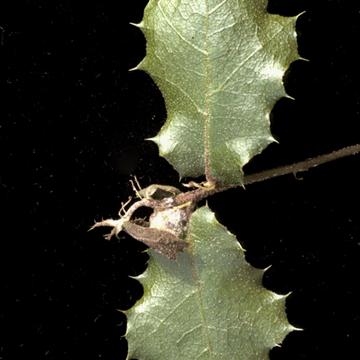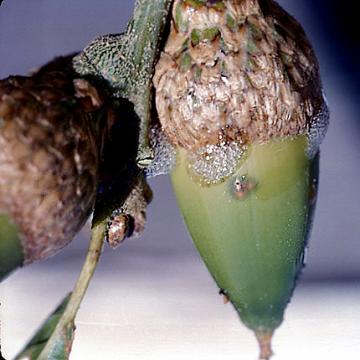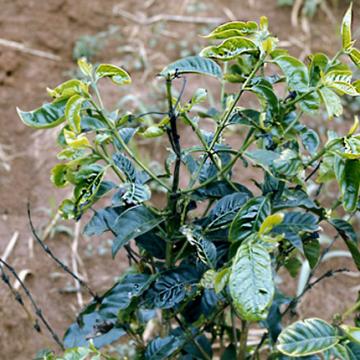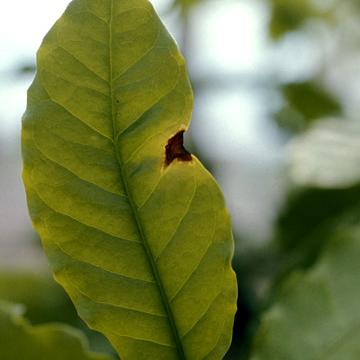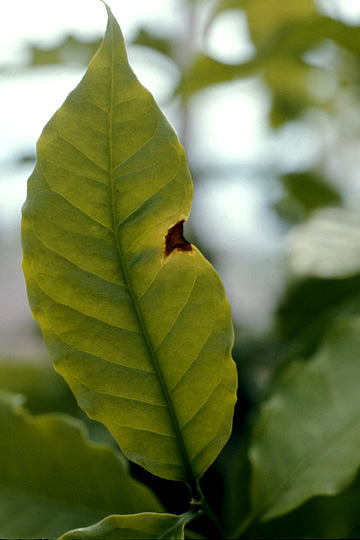DISEASE: Aster yellows
HOST: Squash
Diagnostic characteristics for the disease are yellowing of young leaves, proliferation of secondary shoots, and rigid erect habit. Leaves are misshapen and smaller than normal and have stiff, thick laminae.
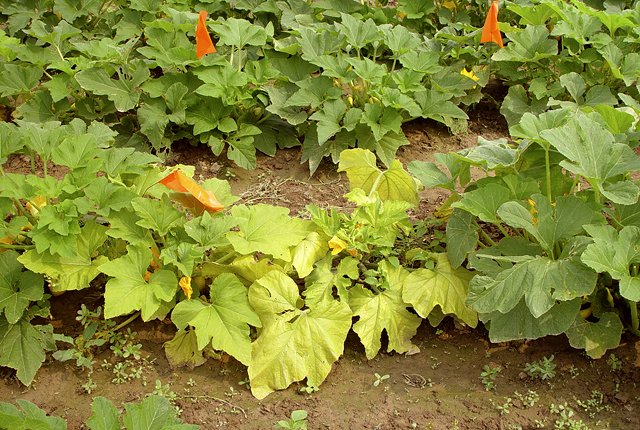
Aster yellows | Squash
DISEASE: Aster yellows
HOST: Squash (Cucurbita sp.)
PATHOGEN: 'Candidatus Phytoplasma asteris'
PATHOGEN SYNONYM: Phytoplasma Aster yellows group
SOURCE: S. Miller
DISEASE: Bacterial wilt
HOST: Squash
Field with severe symptoms of wilt. Foliage often is chlorotic and leaf margins may be chlorotic and necrotic before plant death. Bacterial ooze may be seen streaming from the xylem when infected stems are cut.
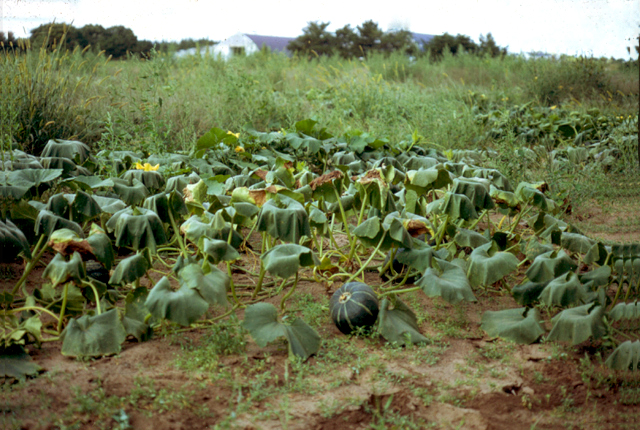
Bacterial wilt | Squash
DISEASE: Bacterial wilt
HOST: Squash (Cucurbita maxima)
PATHOGEN: Erwinia tracheiphila
SOURCE: B. Jacobsen, M. Shurtleff
DISEASE: Coffee leaf scorch
HOST: Coffee
Diseased twig with yellowish, stunted leaves (left). Healthy twig with normal-sized leaves (right).
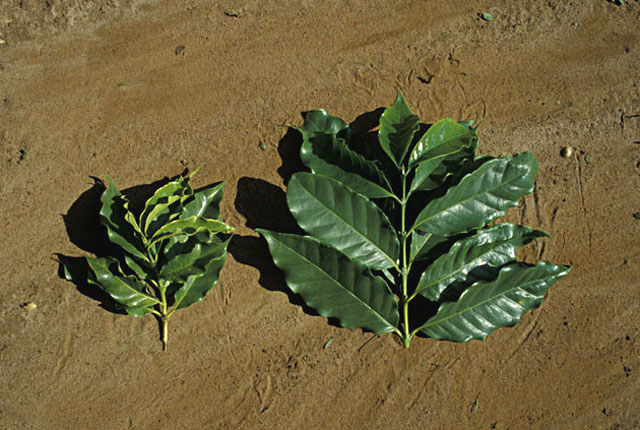
Coffee leaf scorch | Coffee
DISEASE: Coffee leaf scorch
HOST: Coffee (Coffea arabica)
PATHOGEN: Xylella fastidiosa
SOURCE: S. Purcell
DISEASE: Drippy nut disease
HOST: Oak
Ooze from young twig inoculated with Brenneria quercina.
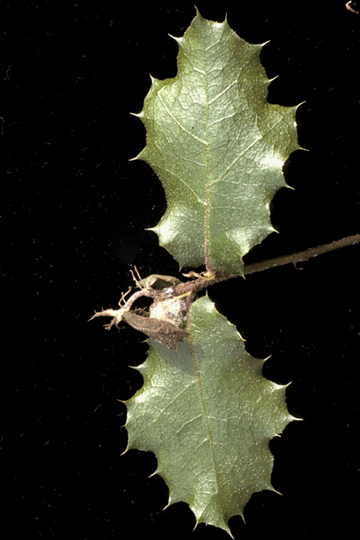
Drippy nut disease | Oak
DISEASE: Drippy nut disease
HOST: Oak (Quercus agrifolia)
PATHOGEN: Brenneria quercina
PATHOGEN SYNONYM: Erwinia quercina
SOURCE: M. Schroth
DISEASE: Drippy nut disease
HOST: Oak
Ooze from infected acorn. Copious ooze drips from infected acorns, leaving sticky spots on objects under tree canopy. Infections are associated with insect oviposit wounds.
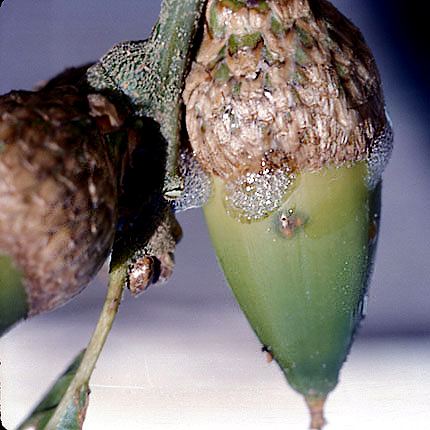
Drippy nut disease | Oak
DISEASE: Drippy nut disease
HOST: Oak (Quercus agrifolia)
PATHOGEN: Brenneria quercina
PATHOGEN SYNONYM: Erwinia quercina
SOURCE: M. Schroth
DISEASE: Halo blight
HOST: Coffee
Leaf with blackish lesions surrounded by yellow halos.
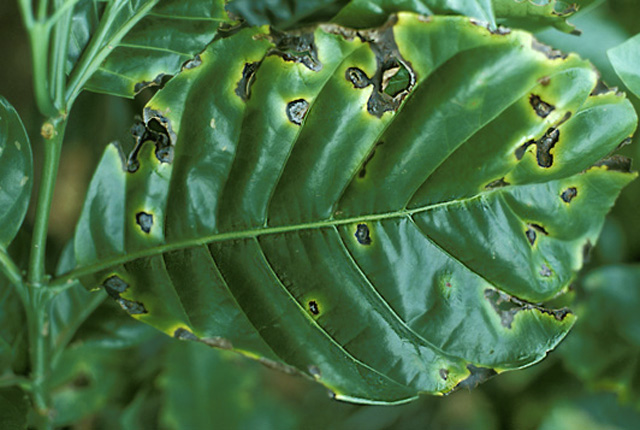
Halo blight | Coffee
DISEASE: Halo blight
HOST: Coffee (Coffea dewevrei)
PATHOGEN: Pseudomonas syringae pv. garcae
SOURCE: S. Mohan
DISEASE: Halo blight
HOST: Coffee
Young blighted coffee plant.
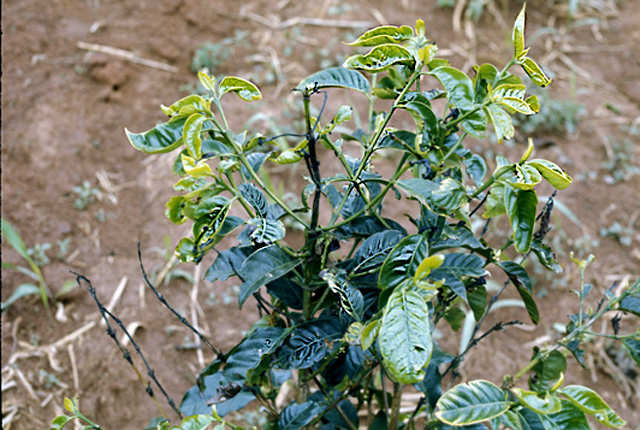
Halo blight | Coffee
DISEASE: Halo blight
HOST: Coffee (Coffea dewevrei)
PATHOGEN: Pseudomonas syringae pv. garcae
SOURCE: S. Mohan
DISEASE: Halo blight
HOST: Coffee
Stem blight stage of disease.
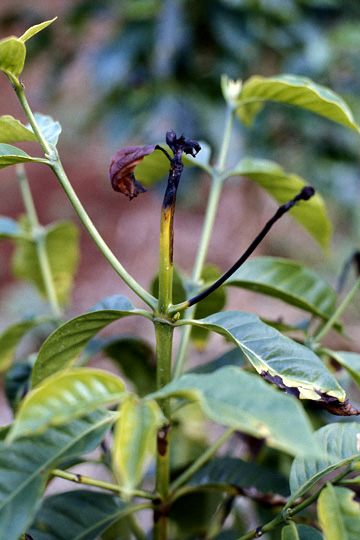
Halo blight | Coffee
DISEASE: Halo blight
HOST: Coffee (Coffea dewevrei)
PATHOGEN: Pseudomonas syringae pv. garcae
SOURCE: S. Mohan


